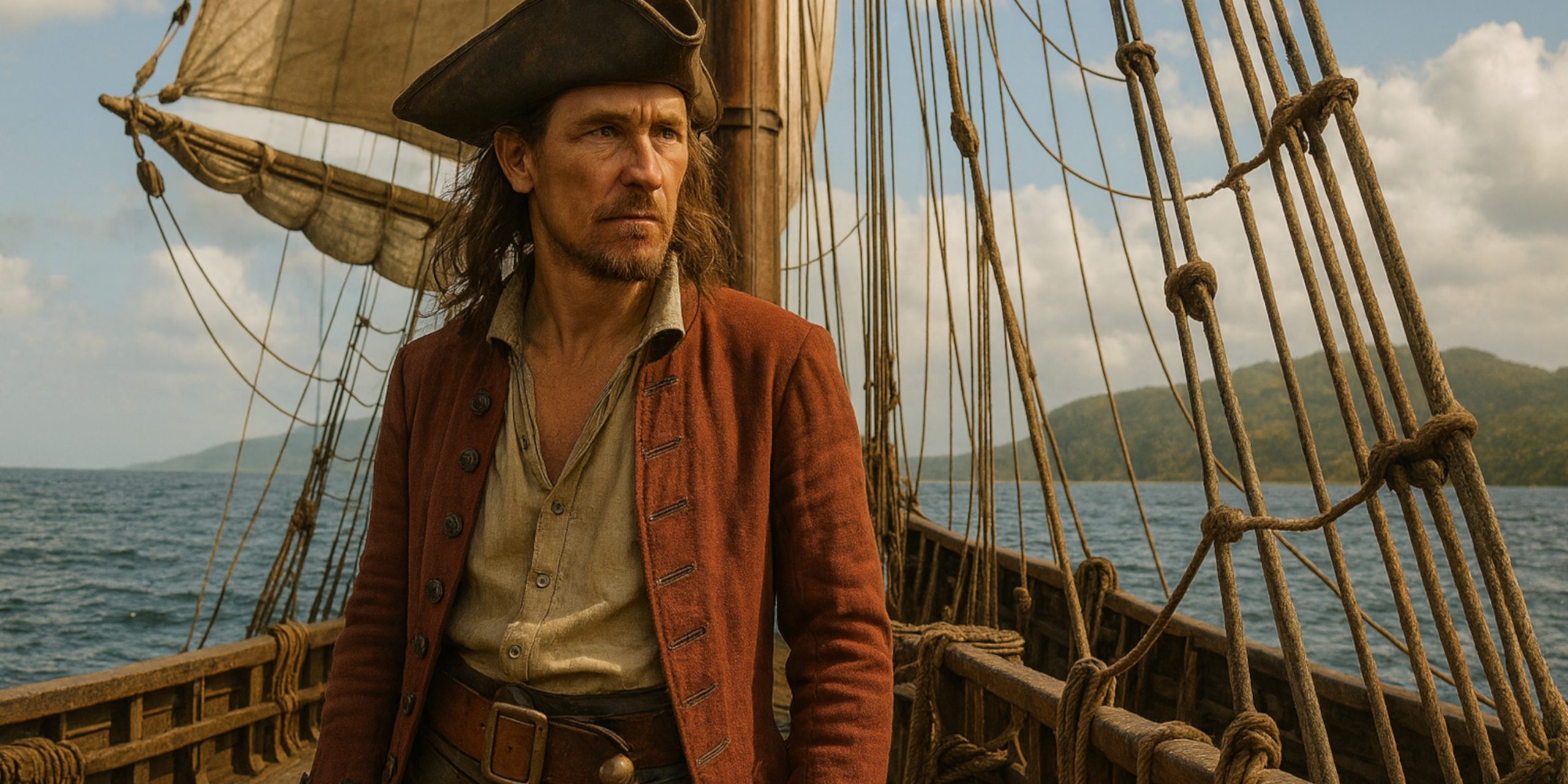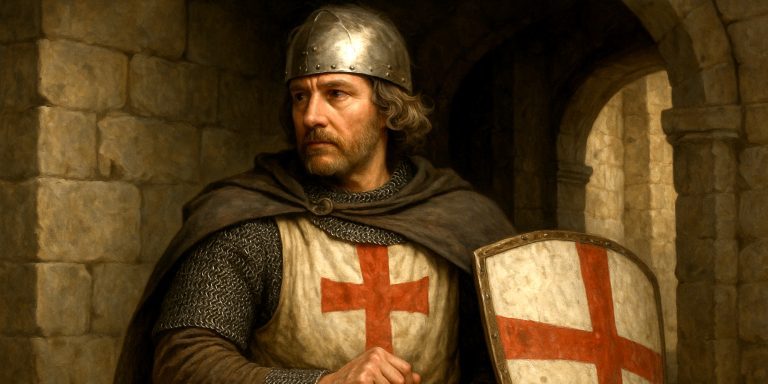
Calico Jack Rackham was a pirate whose name became synonymous with flamboyance, rebellion, and notoriety during the so-called Golden Age of Piracy. Known more for his companions and his style than for great naval victories, Rackham’s story remains a striking example of piracy’s theatrical edge.
Early Life and Rise to Piracy
John Rackham, better known as “Calico Jack”, likely earned his nickname from the brightly coloured calico coats he wore, standing out from the darker garb typical of his peers. Details of his early life are limited, but he first emerged into historical records as quartermaster under Charles Vane, a fierce and often uncompromising pirate captain.
In 1718, Vane refused to attack a powerful French warship. Rackham, seeing an opportunity, led a vote of no confidence. He seized command of the ship, exiling Vane and taking over as captain.
“You are a coward, and we will not follow you. There are others who shall.” — attributed to Rackham during his mutiny against Charles Vane, 1718
Ships and Crew
Rackham’s most famous ship was the Revenge, a relatively small sloop but fast and agile, ideal for the shallow waters of the Caribbean. It was during this time he sailed alongside two of the most infamous female pirates in history: Anne Bonny and Mary Read.
His crew was made up of roughly 20 to 30 men, a modest force compared to some of the larger pirate fleets. Nonetheless, Rackham’s group was tight-knit and mobile, making quick raids along the coastlines of Jamaica, the Bahamas, and Cuba.
Weapons and Tactics
Rackham’s crew typically relied on:
- Flintlock pistols (often dual-wielded)
- Cutlasses for boarding actions
- Boarding axes and daggers
- Swivel guns mounted on the rails of the Revenge
His tactics focused on speed and intimidation. Rackham preferred ambushing lightly armed merchant ships rather than engaging in drawn-out battles.
Pirate Flag
Calico Jack is often credited with popularising the now-iconic Jolly Roger featuring a skull above crossed swords. Whether he invented it or not, the design has since become the default image of piracy in popular culture.
Notable Raids and Bounty
Rackham’s piracy was short-lived but bold. In the summer of 1719, his crew captured several merchant vessels and fishing boats off the Jamaican coast. These were quick, opportunistic hits aimed at acquiring supplies and small treasures rather than large fortunes.
By late 1720, Governor Woodes Rogers had issued a bounty for Rackham’s capture, listing him as a “notorious pirate and enemy to the peace of commerce.” Though no exact figure survives, similar bounties ranged from £100 to £300.
Capture and Fate
Rackham’s downfall came in October 1720. Anchored near Negril, Jamaica, his crew was surprised by a British sloop commanded by pirate hunter Jonathan Barnet. Many of Rackham’s crew were reportedly drunk at the time. Anne Bonny and Mary Read fought fiercely, but the rest surrendered with minimal resistance.
Rackham was taken to Spanish Town, Jamaica, and tried for piracy.
“Had you fought like a man, you need not have been hang’d like a dog.” — Anne Bonny, reportedly to Rackham before his execution
On 18 November 1720, Calico Jack Rackham was hanged. His body was gibbeted on a small islet at the entrance to Port Royal, known ever since as Rackham’s Cay.
Treasure and Legacy
Despite romanticised tales, no major hoard or hidden treasure has ever been linked to Calico Jack. Most of his plunder came in the form of basic provisions, liquor, cloth, and coin from coastal raids.
His real legacy lies in the mythos of piracy. The presence of Anne Bonny and Mary Read at his side captured the imagination of generations. His distinctive flag and style helped frame how pirates would be imagined in fiction centuries later.
The Seven Swords Takeaway
Rackham was never the most brutal nor the most successful of his kind. Yet his story endures, partly because of his flair, partly because of the company he kept, and partly because he represented a cultural moment when lawlessness and self-rule briefly flourished under black flags on blue waters.
His remains no longer exist, and his treasure is likely spent or scattered, but his legend continues to sail on.
Watch the documentary:



